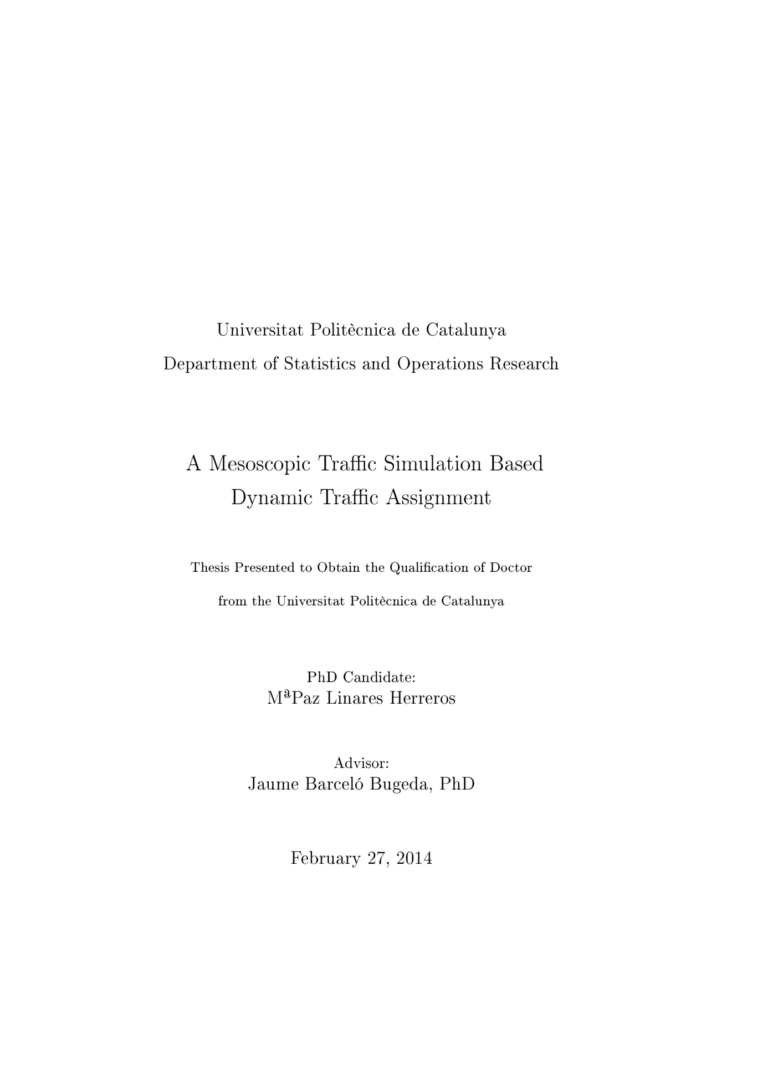Dynamic traffic assignment based on mesoscopic simulation

Theses
The aim of this research is to study and analyze different possibilities to improve the resolution of the problem. In an operational context, the objective of ADT models is to represent the evolution of the urban network when the traffic conditions change. These models try to describe the allocation of demand on the different roads connecting the OD pairs following a state of equilibrium. In this case it has been considered that the behaviour of drivers in each of their individual decisions taken during the journey is a time-dependent generalisation of Wardrop’s First Principle, called Dynamic User Equilibrium (EDU). This hypothesis is based on the following idea: for each OD pair for each instant of time, if the travel times of all users who have departed in this time interval are equal and minimal, then the dynamic flow of traffic to the network is in an EDU state based on travel times (Ran and Boyce (1996)). The present work takes as a starting point the model of continuous variational inequalities in time proposed by Friesz et al. (1993) to solve the problem of dynamic user equilibrium. On the one hand, there are the so-called analytical approaches that use mathematical optimization techniques to solve the problem directly. On the other hand, there are the models and formulations based on simulation that approximate heuristic solutions at a reasonable computational cost. While analytical models focus primarily on demonstrating theoretical properties, simulation-based models focus on trying to build models that are practical for use in real networks.
Thus, because simulation-based formulations show the most promise in practice, this approach has been chosen in this thesis to address the ADT problem. Recently, the field of simulation-based ADT models has been of particular interest. Our simulation-based formulation consists of an iterative process consisting of two main components, systematized by Florian et al. (2001) as follows: A method to determine the new (time-dependent) flows on the roads using the travel times experienced on these roads in the previous iteration. A dynamic network loading (DNC) procedure that determines how these flows propagate along their corresponding paths. Flow reassignment algorithms can be grouped into two categories: preventive and reactive. It is important to note here that not all computational implementations based on the proposed algorithmic framework provide an EDU solution. Therefore, although in this thesis we analyze the two proposals, we will focus on the preventive methods of flow reassignment because they are the ones that guarantee to reach the considered hypothesis (EDU).
In addition, our simulation-based ADT model requires a CDR component that can reproduce different classes of vehicles, traffic light controls and lane changes. Thus, one of the objectives of this thesis is to develop a new CDR traffic simulation model with these characteristics (multi-class and multi-lane), taking into account that it will be one of the main components of the proposed ADT framework.